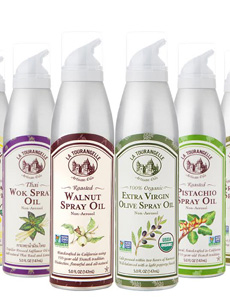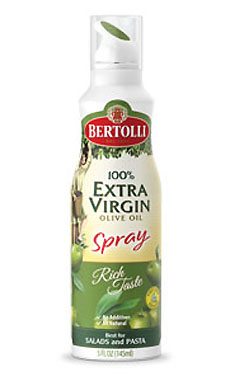TIP OF THE DAY: Check Your Cooking Spray Ingredients
|
Some 50 years ago, the debut of the first spray cooking oil, PAM, was a game changer for many cooks. But over the years, the joy of convenience and calorie savings gave way to wariness of the chemical propellants—petroleum, propane and isobutene—said to be 11% of the contents in the aerosol spray can. Today’s tip is to look at the ingredients in the can. If you’ve never used it, here’s the 411: Cooking spray is applied to frying pans and other cookware to prevent food from sticking. The virtually calorie-free spray spare the calories and saturated fats of butter, oil or other fat because the sprayed layer is so thin. PAM and the cooking spray brands that followed made other tasks a breeze, too—in the kitchen and beyond. We’ve listed some of the popular uses for cooking spray, below. In recent years, consumers have become more aware and fussy about the quality of the ingredients they consume. Two companies have decided to lose the controversial chemicals: major brand Bertolli and artisan producer La Tourangelle. Opting for compressed air to propel 100% oil (instead of 89% oil and 11% chemicals), these products deliver even better taste without the hint of chemicals. The original sprays were a greasing agent; these new, all natural sprays are also salad spritzers, finishing oils* (especially the top-quality La Tourangelle line) and more—for example, a cholesterol-free, mess-free condiment for corn on the cob. In every case you use far less oil than in another type of application. The new sprays launch in three varieties: |
Spray away, without chemical propellants. Photo courtesy Bertolli. |
|
|
La Tourangelle, the California-based artisanal oil company and a NIBBLE Top Pick Of The Week, has launched the first-to-market line of gourmet spray oils that are also all-natural and propellant-free. The company’s top-selling bottled oils are now sprayable: |
||
 Four of the six new artisan-quality spray oils from La Tourangelle. Photo courtesy La Tourangelle. |
USES FOR COOKING SPRAY
Cooking spray is godsend for anything that calls for greasing, from skillets to bundt pans. Popular kitchen uses include: How about using cooking spray for removing dead bugs from your car, and other unconventional uses? |
|
|
COOKING SPRAY HISTORY PAM, America’s first aerosol cooking spray, was launched in 1961 by entrepreneur Leon Rubin who, with Arthur Meyerhoff, started Gibraltar Industries to market the spray. The name is an acronym for Product of Arthur Meyerhoff. The brand is currently owned and distributed by ConAgra Foods. With canola oil as its main ingredient, the appeal of PAM was immediate. And now, welcome to Cooking Spray 3.0: chemical free.
|
||



